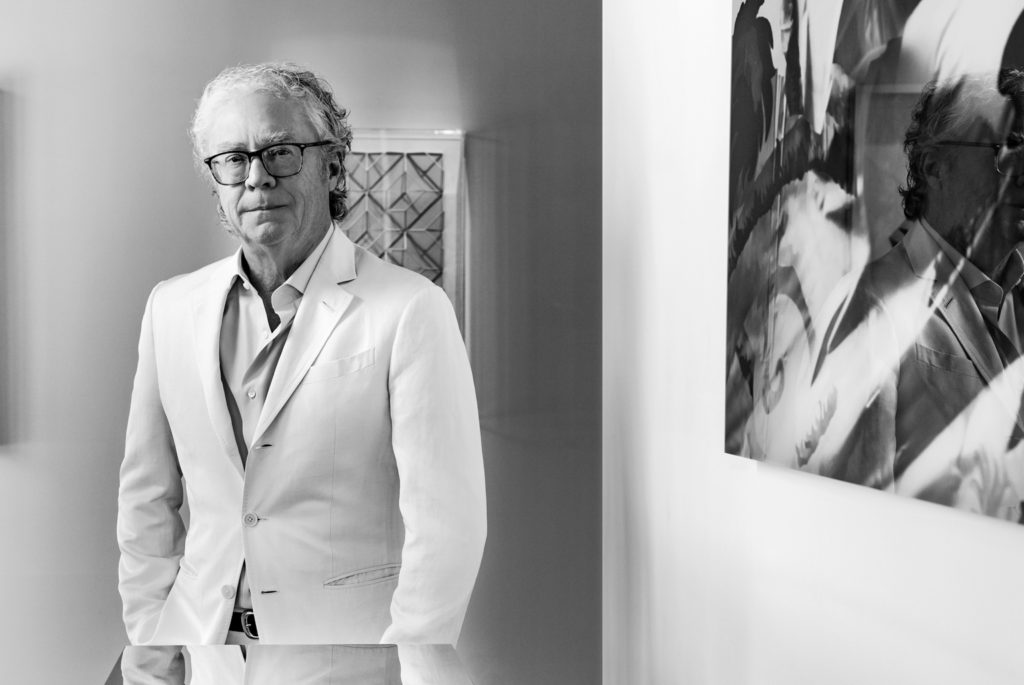Chad Jensen
When METHOD & CONCEPT founder Chad Jensen graduated from Detroit’s College for Creative Studies, he moved to Florida and couldn’t find a job. Here was this young guy with a portfolio filled with experimental objects, like laminate chairs that nod to the Memphis Group, sculptures made from bike seats and ceramic side tables with deconstructed legs. He had a dream to merge the worlds of fine art, craftsmanship and design with ideas that were all a little too out there for the time. “They said, ‘I don’t think we can keep you engaged enough,’” Chad recalls. One potential employer pointed him to the respected woodworking group Thomas Riley Artisans’ Guild in Naples. Chad called the Guild’s main line and owner Tom Riley answered within a few rings. Tom immediately offered Chad a job as a maker, with a direct line to pitch all his wild ideas. And he had plenty of those.
The 45-year-old artist, curator, furniture maker and designer has made his mark in the art and design community. He’s one of the founding directors for the bustling Naples Design District; he lobbied for public art and championed local artists through his work on the board for the United Arts Council of Collier County, where he served as president from 2016 to 2018; he mentors arts students at Florida Gulf Coast University (FGCU), where he teaches young creatives to turn their talents into gainful careers; and he represents upcoming and midcareer artists in his contemporary art gallery-meets-design atelier, METHOD & CONCEPT, which he opened with Tom’s help in 2003 as the Thomas Riley Studio. Two years ago, the gallery expanded from a small space nearby to its current 3,000-square-foot home in The Collective.
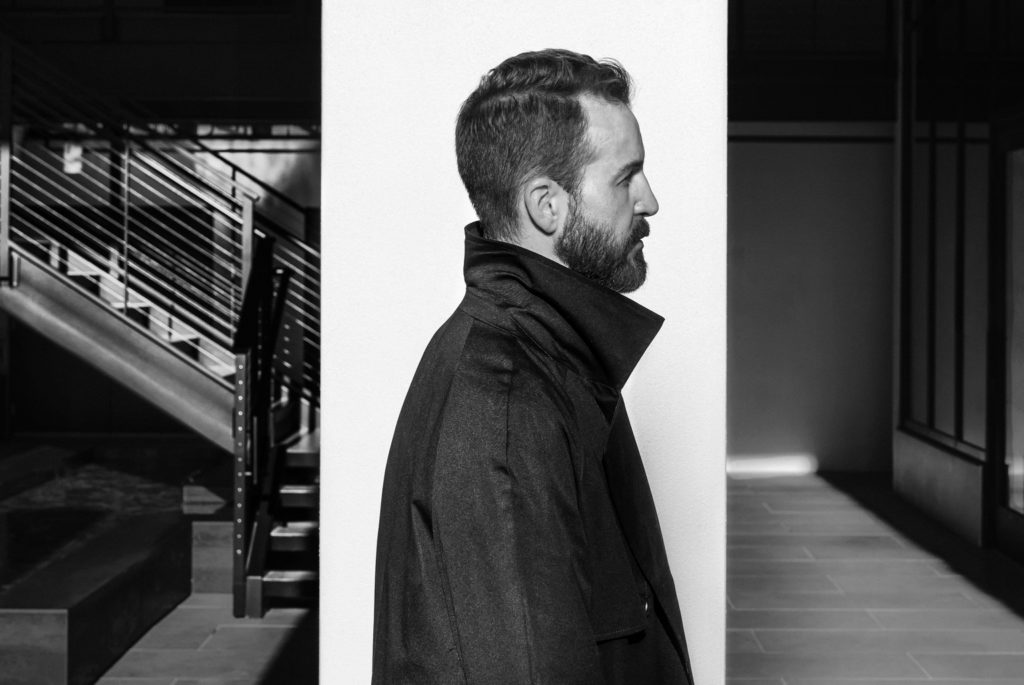
On the cusp of METHOD & CONCEPT’s 10th anniversary in 2023, Chad reflects on a quote from writer Ralph Waldo Emerson that inspired his career; “Do not go where the path may lead, go instead where there is no path and leave a trail.” He’s committed to cementing progressive art and design in Southwest Florida, where traditional styles have dominated. His approach has been varied over the years—stocking genre-defying artists; collaborating with Naples Botanical Garden and Artis—Naples; hosting immersive events (like the TEDx-style talks he used to do with industry professionals); cultivating promising local talent, like Naples sculptor Brett F. Harvey. All of it is served up with approachable hospitality, aimed to introduce new artists and mediums and bring new aficionados into the fold. No cliquish attitudes here.
And soon, Chad unveils the ACL|ROW Sculpture Park, named after a historic train marker he found in an empty stretch of grassy dirt between METHOD & CONCEPT and Quattro at Naples Square. He researched the letters engraved on a small concrete stump and learned it had served as a marker for Atlantic Coast Line Right-of-Way in the once-bustling railroad area: “I said to myself, ‘This is an opportunity, with this little piece of dirt over here, to be a small introduction to [the history of] Naples and Southwest Florida.’” He worked with Naples Botanical Garden to fill the space with subtropical plants, a crouching sculpture by Brett F. Harvey and an electrical box wrapped with Naples painter Carmelo Blandino’s vibrant florals. Chad’s currently working to convince city officials to extend the garden to create a walkable art path from Naples Design District to the new Gulfshore Playhouse cultural campus. “That’s the ‘method and concept’ part; we don’t want to be seen as just an art gallery; we want to be kind of like an octopus, with as many tentacles as we can get out there. It’s about engaging people with interesting, compelling content,” Chad says. —Jaynie Bartley
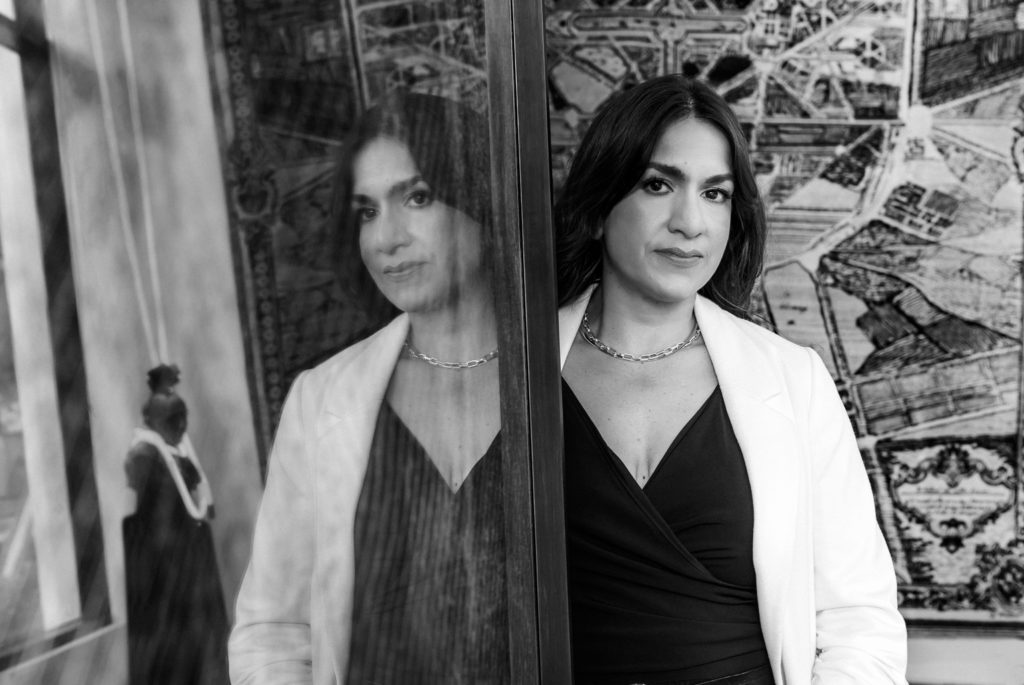
Tessa LeSage
“I like to do impossible things,” Tessa LeSage says.
That’s a good thing because eight years ago, the Southwest Florida Community Foundation (now Collaboratory) recruited Tessa from the Lee County government and charged her with the organization’s biggest undertaking to date: Turn a fledgling student financial aid initiative into a full-scale regional workforce development pipeline. Tessa admits she didn’t know where to begin.
But she had been honing her skills and big-picture thinking from the start of her career as a mental health case manager in the early 2000s. During that time, “I realized that it was almost impossible to help anyone because of how our community is designed,” she says, referring to the region’s minimal public transportation and the unwieldy distance between residential neighborhoods and downtown jobs and services. She studied public policy and worked as Lee County’s inaugural sustainability manager, intent on solving community challenges from a holistic, systemwide, collaborative, data-driven approach.
The FutureMakers Coalition launched in 2015 with Tessa at the helm and a vision to increase the number of Southwest Florida adults holding college degrees or other career credentials to 55 percent by 2025. The shift required reimagining how industries, educators and civic leaders work together to ensure residents acquire the tools they need to advance themselves and the region.
Within a year, the group had set its regional outcomes as one of 75 of Lumina Foundation’s national Community Partners in Attainment, which was likewise pushing to transform the workforce. Today, FutureMakers Coalition includes some 140 partnering organizations, from employers to early-learning providers. The percentage of adults with career credentials has ballooned to 42.2 percent. The Coalition achieves this through initiatives such as a push to re-enroll FGCU and Florida SouthWestern State College students who had stopped their schooling. The effort yielded 1,500 returning students, 240 more degrees—and a deeper understanding of why they paused their educations and how to dismantle such barriers.
The needs are even more critical in the wake of Hurricane Ian, which left many FutureMakers beneficiaries homeless. “We’ll be focused on how FutureMakers can ensure folks have the training for these much-needed jobs as we rebuild,” she says.
And, the group’s about to accelerate even more. The federal government awarded FGCU, in partnership with FutureMakers, a $22.9 million grant—the largest in the university’s and Collaboratory’s history—to develop the Southwest Florida Equitable Jobs Pipeline. Efforts focus on growing the talent pool in K-12 education, healthcare, manufacturing and logistics. “Education is the pathway to success,” Tessa says. “Once one generation changes, they create change for their families for generations to come.” —Jennifer Reed

Rob Moher
As CEO of the Conservancy of Southwest Florida for the last 20 years, Rob Moher has become synonymous with conservation in Southwest Florida. Now, the Moher name might become synonymous with music education.
After his daughter Amaya graduated high school, Rob and his wife Sandra faced a dilemma. Amaya is gifted musically but had difficulty finding post-secondary education because of her struggles learning in a traditional classroom setting. They were looking for music schools that specialized in students with neurodivergence, which includes conditions like autism, Tourette syndrome and ADHD. There aren’t many–certainly none in Southwest Florida. So, they created one: the Southwest Florida Music Education Center in Naples.
The school recently acquired the former Hodges University campus for its future home and partnered with Berklee Institute for Arts Education and Special Needs to develop a curriculum for neurodivergent students ages 18 to 30. “It’s a first-of-its-kind program,” he says.
It’s also the latest success story for the native Canadian. Rob came to Naples in 1999 and made his mark as an expert fundraiser at the Conservancy before being named CEO in 2013. Since, he’s helped establish the Conservancy as a force protecting the local ecosystem.
Recently, their python program made headlines internationally for capturing a 215-pound, 18-foot-long python, the largest discovered in the state, as part of its ongoing work to study and control the invasive species. Reining in the python population is daunting, but that’s life at the Conservancy. One hour, they may be working to prevent blue-green algal blooms; the next, facing off against deep-pocketed corporate interests. Always humble, Rob credits his 60-person staff and small army of volunteers. “This is not an easy job when you’re up against powerful interests,” he says. “This team does not stop.” The Conservancy quickly stepped in to help nearly 100 misplaced and injured animals in the von Arx Wildlife Hospital after Hurricane Ian, despite power outages that spanned days.
As passionate Rob is about the local ecology and community, he may have had to leave Naples to find the best education for his daughter. “I have a rule that I tell my staff, too: ‘Family first.’ We would have gone wherever the best program existed for my daughter,” he says. “But we had the chance to create something here. And it allowed us to stay in this beautiful city.” —Justin Paprocki

Brian Rist
The first time Brian Rist went to college, he, well, survived. “I wasn’t necessarily the best student in the world,” he says with a laugh. “But I graduated.”
Forty-two years later, he returned to the University of Massachusetts Lowell and got a master’s degree in entrepreneurship. There he was, with 25 years of experience running a successful storm shutter business, in a classroom with students decades younger. In some cases, he could probably teach the classes. But that wasn’t the point. “I truly believe that learning is a lifelong process,” he says.
It’s the reason why education is one of the pillars of The Rist Family Foundation, which he started in 2020 before selling his controlling interest in Storm Smart last year. He started the hurricane protection company from scratch in 1996 and grew the business until it made Inc. magazine’s list of fastest-growing companies multiple times and employed more than 250 people. “I thought I had taken it about as far as I could really take it,” he says.
From there, he went about the business of giving away much of his wealth to help others. Since launching, the foundation has donated millions to UMass Lowell, including a $3 million donation to start the school’s first endowed deanship. Locally he’s given to Florida Gulf Coast University and Florida SouthWestern State College, including $2.5 million to support FSW’s cybersecurity program and $4 million for the Rist Family Foundation Institute for Entrepreneurship at FGCU, where he’s also now teaching as an adjunct professor. “We are doing what we can to make education a little better, a little stronger,” he says.
Throughout his life, Brian embraced opportunities to lend a hand. He recalls seeing a news story of a woman whose water got shut off because she couldn’t afford the $272 water bill; he quietly paid it for her. When he met the young women of the now-popular wedding music group Jade Strings, he gave them money to buy a car through FGCU’s entrepreneurship Runway Program. He helped another woman who had gotten pregnant young and had to drop out of school return to her studies, and she’s now working with Lee Health.
Brian can see the value in supporting everything from social services to local business associations. Still, to make his giving more effective, he focuses on certain pillars: the community (“Southwest Florida has been very good to us”), entrepreneurship (“because it’s who we are”), education (“the only true way of solving problems”), health (tackling issues like hunger, because he can’t stand the idea of kids going to bed hungry) and veterans (“We can’t say thank you enough for people who gave up their lives so we can live the way we live”).
His motivation is simple—he knows every life touched makes a difference. “You can’t take it with you when you go,” Brian says. “I’ve already taken care of my family, so from there, all you can do is try to make the world better. It’s all our jobs to make the world a better place.” —J.P.

Beverly Fanning
Beverly Fanning first met her mentee, Vonte Parris, at a Naples Children & Education Foundation event in 2020. Vonte, an avid football player, was in his senior year of high school and staying at Rob’s Cottage at Youth Haven, a shelter for at-risk teenagers. She was a football fan, and he played running back; they bonded quickly. Over the next several months, she stayed in touch with Vonte and Youth Haven. With her financial support, Vonte was able to play in a post-grad football program at the prestigious athlete prep school IMG Academy in Bradenton. Now, the budding athlete is on the roster at Morgan State University in Baltimore.
Though Beverly only moved to Naples full-time three years ago, people who know her will tell you she gives and gives and gives. Her Beverly B. Fanning Foundation has donated to charities locally and throughout the South, including in Atlanta, where she lived for 40 years and raised her two children. Naples Children & Education Foundation, Naples Zoo at Caribbean Gardens, St. Matthew’s House, Immokalee Foundation—naming all her beneficiaries would take up much of this page.
She walks the walk, too. After Hurricane Ian, she bought pizzas and sandwiches from local restaurants and then drove around to heavily impacted communities to distribute food to essential workers. When shelters and hotels were full, she opened her doors to a family whose home had flooded nearby. She also housed an out-of-town lineworker (whom she met via a Facebook post from his mother) in need of a warm bed.
This month, she plans to team up with T-Michaels Steak & Lobster House to provide free dinners for vets and first-responders on Veterans Day. She loves helping wherever she can. “You develop so many lifelong friendships, and that’s what makes it all worthwhile,” she says. —J.P.
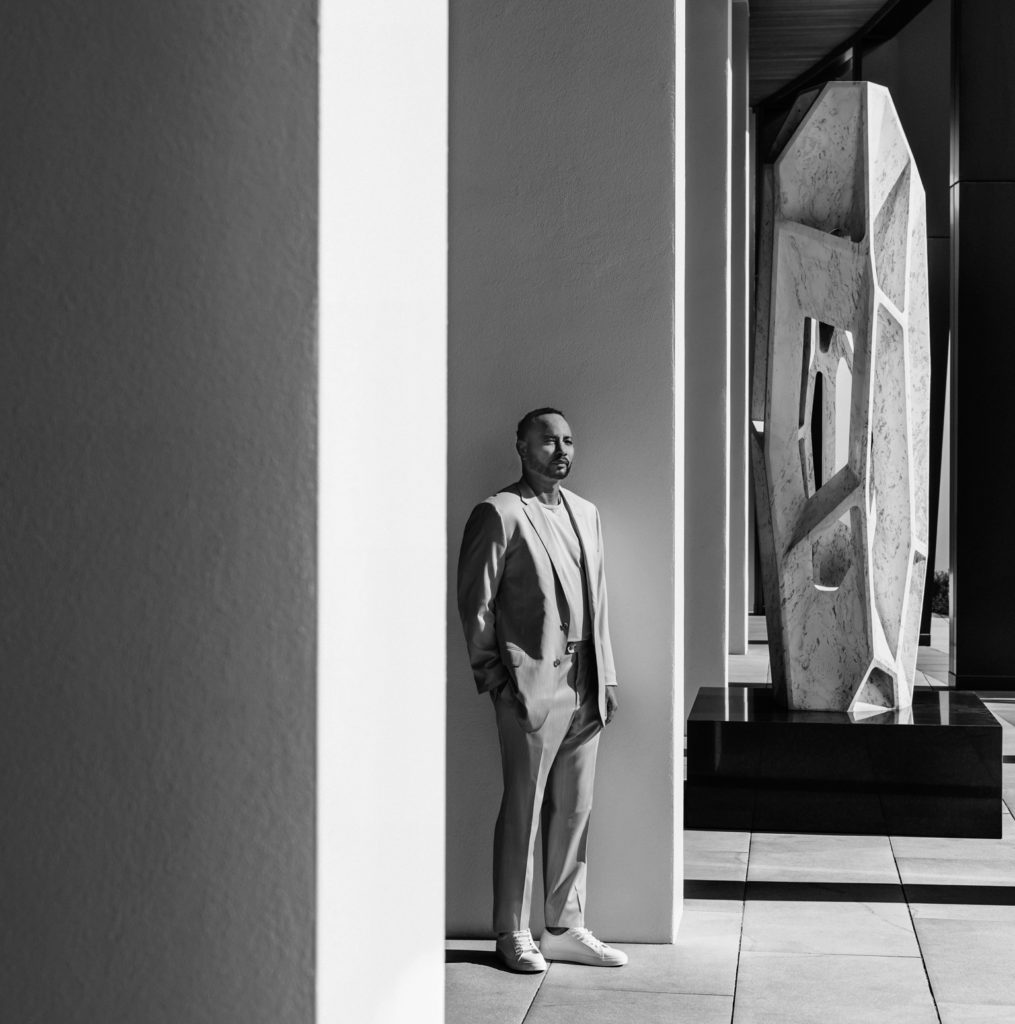
Jesse Bryson
The world must have looked small to Jesse Bryson, growing up in the low-income Dunbar community in Fort Myers, where his single mom worked multiple jobs and college was not presented as an option.
He made his world big, regardless: 20 years in the U.S. Army, a doctorate, a stint in the White House Communications Agency and a second career as a JROTC instructor at Fort Myers High School where his work won him the Golden Apple Award for Excellence in Teaching.
He’s also making the world big—no, huge—for local kids whose lives are limited. In 2015, Jesse founded the “I Will” Mentorship Foundation (IWMF), alarmed by a surge in community violence and acutely aware of the need to provide young people with the skills, opportunities and hope that can shatter generational poverty.
IWMF focuses on “E-STEM” education: environment, science, technology, engineering and math. With such training, Jesse says students can land good jobs, whether they pursue college degrees or industry certifications.
IWMF students build robots and electric vehicles and compete against other teens (the robotics team won the 2022 FIRST Tech Challenge World Championship). They learn to operate drones and work on fabrication machines. They’re introduced to welding, a trade in high demand. Jesse and his cadre of mentors (all of whom, including Jesse, are unpaid) take students on campus tours, offer SAT and ACT exam preparation, and help with college applications.
The mentoring doesn’t stop when high school ends. IWMF offers young adults training in E-STEM-related trades. “We’re not just an afterschool enrichment program; we become your extended family. No matter how old you get, you can always come back,” Jesse says.
Jesse had left Washington because he felt the tug of home and a longing to give back. He uses another IWMF initiative, the Urban Community Farm in Dunbar, to instill a civic spirit in his young charges. The foundation’s students grow produce to donate to human service organizations. Some adult men also work the farm in exchange for contributions to their children’s college savings accounts. In the process, they learn about nutrition, home gardening and green technology (the garden operates using biofuels, solar panels and hydroponic techniques). While Hurricane Ian destroyed much of the farm and its structures, Jesse is hopeful that they can rebuild. “A root doesn’t have a single stem, it spreads out, and the more the roots spread out, the stronger the plant becomes,” he says. “The stronger the stem becomes rooted in a community, the greater the harvest will be for the community.” —J.R.
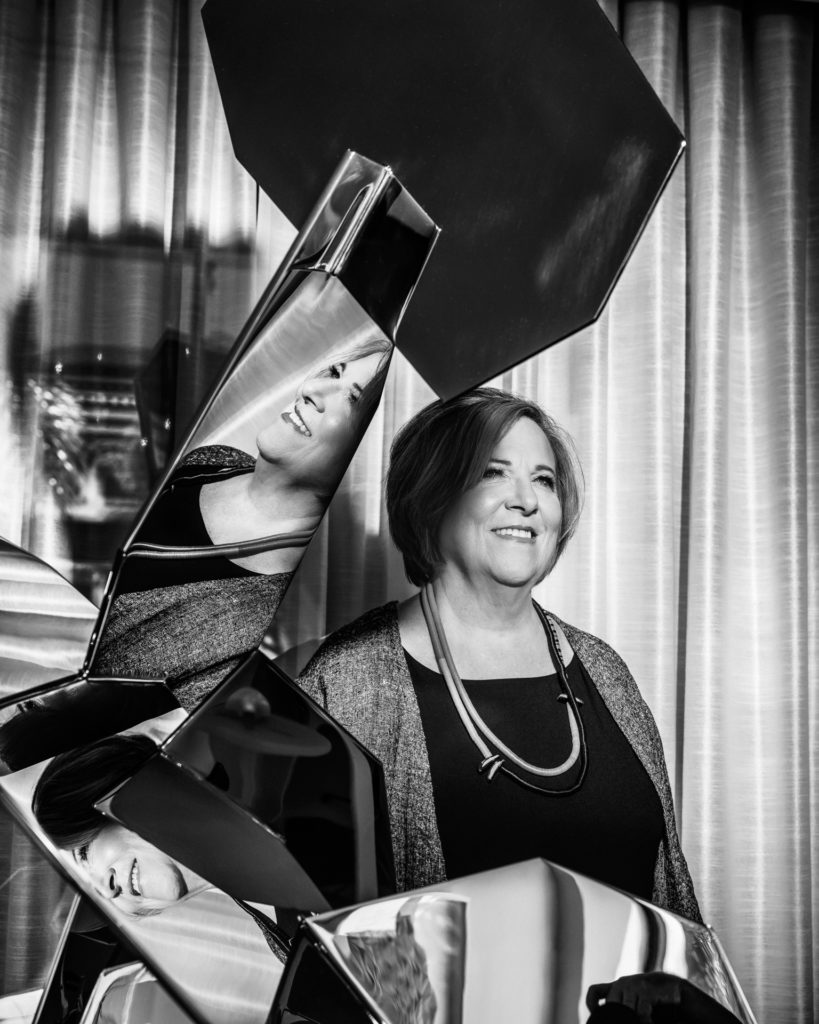
Joyce Owens
Joyce Owens considers herself a citizen of the world. Born just outside of Chicago, her family often camped in national parks, where she built an appreciation for the Earth and its elements. Now, the modernist architect has built a reputation for designs that sync with Mother Nature’s rhythm, leading with sustainability and rooted in a deep respect for the architecture of the past (she studied architecture in Rome and spent 11 years running her firm in London, where she specialized in historic buildings). Since landing in Fort Myers in 2004, she’s been keen on understanding, reclaiming and creating a native language for architecture in Southwest Florida, gathering clues from traditional cracker houses, Seminole chickee huts and the midcentury modern design that’s synonymous with nearby Sarasota. For a time, she penned a column in a local newspaper detailing the relevance of modern architecture locally, and she has curated museum exhibits in the region dedicated to local midcentury modern buildings.
Through her firm, Architecture Joyce Owens, she draws elements from the past with current design innovations to create residences that are wholly at home and resilient in their environment with elevated floorplans to protect from flooding, high-pitched roofs that allow hot air to rise and rain to run off, deep overhangs for shade, cross-ventilation to capture the Gulf breezes, and details like using tinted glass to keep turtles on the beach and away from artificial light sources. “No matter what, we never forget that we are in Southwest Florida, and we have to deal with the climate, and we have to learn from the past,” Joyce says.
Today, Joyce is a go-to for sustainable architecture and modernist designs. She’s a force of nature, restoring island structures (like the 1970s cottage by innovative post-modernist Charles Moore, which she renovated on Captiva), designing sustainable homes and commercial buildings, and creating new techniques to ensure safe coastal living. As the islands recover from devastating hurricane damage, Joyce stresses the importance of building safer and smarter. She works with structural engineer Shawn Anderson at Select Structural on the islands. Together, their teams found a more effective alternative for stilt-like pilings, instead driving the pilings underground to act like tree roots, creating a foundation that lasts.
She’s also inspiring a new generation of female leaders in the industry, working with young women on her team and local talent, like landscape architect Mariah Bakke. Joyce’s latest accomplishment through the American Institute of Architects marks a critical time for women in the traditionally male-dominated field. She revels in the number of women working in design and architecture today. Though female coworkers and mentors were far and few between early in her career, she points to a former colleague Andrea Clark Brown, who passed this year, as someone who inspired her with innovative designs that stand out in a sea of cookie-cutter developments.
In July, Joyce was the first woman to win the Gold Medal from the Florida chapter of AIA, the organization’s highest award. “It’s my responsibility to remind people where we live and what we need to do, and how architects, if you give them the chance, can help with many situations,” she says.
Overdevelopment is a key concern for Joyce, who values sustainability and walkable communities. She thinks a lot about climate protection and affordable housing and how architects can be a force for good by building more thoughtful spaces. “It’s important for architects to find our place in the community as we’re moving forward,” Joyce says. “I want to be the voice of my profession right now, to remind people that we do more than blueprints.”–J.B.
Paul Fleming
Paul Fleming isn’t a shy guy. But he’s not likely to thrust himself into the spotlight, either.
He listens more than he talks and pays attention to the people and things around him, looking for the real deal: What’s going to move the needle? Who is doing things for the right reasons?
The Louisiana oil man-turned-restaurateur has built a culinary empire that includes dozens of concepts and restaurants nationwide (you know them well—P.F. Chang’s China Bistro, Pei Wei Asian Diner, Fleming’s Prime Steakhouse & Wine Bar, Lake Park Diner) over nearly four decades. While each venture has partners, Paul remains hands-on. Walk with him into Lake Park Diner or Fleming’s in Naples, and you’ll see him greet staff by name and ask about their families and recent vacations. Visit the test kitchen for his upcoming PJK Neighborhood Chinese, and he’ll invite you to join the staff in sampling contenders for the menu over a Yuengling.
His businesses are built on Southern values cultivated growing up in Louisiana with a farmer grandfather and a dad who was a lawyer and judge. The Fleming family fished, hunted and ate with the seasons. “When tomatoes were ripe, we ate tomatoes; when cucumbers, or spinach, or whatever was growing—that’s what we ate. We ate quail, duck,” he says. “I didn’t know any of that was unusual.” It was natural that in 1993, when he developed P.F. Chang’s with the help of Philip Chiang (son of the Chinese-American food pioneer Cecilia Chiang), the menus were filled with fresh vegetables, free-range chicken and homemade sauces—practices that were still rather novel then.
He cultivates employees that stay on for decades and can earn a stake in the business. The Lake Park Diner chef oversaw Fleming’s before coming over to build the fledgling local chain that will soon include a Bonita Springs location. The chef who will lead the kitchen at the PJK Neighborhood Chinese—an elevated version of P.F. Chang’s, debuting on Fifth Avenue South—has been with Paul for 20 years.
When it comes to giving back, he’s naturally inclined toward feeding people. He likes to give where he can see tangible results and finds that locally in Naples Children & Education Foundation, which he’s supported for 15 years and has been a trustee with his wife, Jody, for the past five years. In San Francisco, Paul and Jody helped overhaul the soup kitchen at GLIDE to feed 2,000 people a day. He’s also supported NCH Healthcare System, where Lake Park Diner kept workers fed with a steady rotation of healthy meals through critical points of the pandemic. “We did it because it was the right thing to do,” he says.
He likes to be boots-on-the-ground help: “You can learn what the real issues are and who’s legit.” Earlier this year, Paul joined celebrity chef José Andrés’ World Central Kitchen effort on the Poland-Ukrainian border to feed refugees. “They let me clean up a lot,” Paul says, adding that he was primarily on trash duty. It was a throwback to a job in high school at a burger joint, where there was a hierarchy of responsibilities. “The furthest I got was putting the French fries in the bag,” he recalls.
He’s happy to go where he’s needed. A few years ago, after reading a front-page news story about Sister Judy Dohner of Our Lady of Guadalupe and their soup kitchen’s broken kettle, he went out to Immokalee to meet the nun. She was instrumental in growing the Guadalupe Center education nonprofit in the ’80s. He helped replace the kettle, donated other kitchen supplies and has remained close with Sister Judy since, heeding her advice on how he can best assist. Lately, that’s meant driving over with 3,000-to-4,000 diapers a month. “The thing about Paul is that he doesn’t just write a check,” Sister Judy says.
—Stephanie Granada

Captains For Clean Water
In a mere six years, Captains For Clean Water has gone from a couple of fishing guides trying to save their livelihoods amid recurring algae outbreaks and seagrass die-offs to a full-fledged nonprofit dedicated to the long-term health and protection of the state’s water.
The anglers-turned-activists spurred momentum in stalled Everglades restoration projects, including the construction of a 16,000-acre reservoir near Lake Okeechobee, considered the linchpin in the 50-year, $23 billion Comprehensive Everglades Restoration Plan. What happens at the lake directly impacts Southwest Florida because the Caloosahatchee River serves as one of its drainage pipes. Too much or too little Lake O water hurts the estuaries. The same holds true for communities along the St. Lucie River, the lake’s eastern discharge route.
Earlier this year, a bill filed quietly and outside the typical legislative process threatened to unravel all Captains had fought to achieve. Senate Bill 2508 would prioritize the sugar industry’s irrigation needs over reducing the damaging discharges to the coasts.
The team leapt into action. Their messages reached more than 9 million people on social media; website traffic surpassed 735,000 views; almost 100 guides showed up in Tallahassee (even at the height of tourist season); and nearly 50,000 supporters signed petitions and lobbied state lawmakers. “People were seeing this [bill] as something that was going to jeopardize the impact their efforts had made—tangible things that were happening because they got involved. And that did not sit well,” says Chris Wittman, who co-founded the organization with fellow fishing guide Daniel Andrews.
Gov. Ron DeSantis vetoed the legislation.
The group had been gearing up to celebrate more good news—a new, estuary-friendly management plan for Lake Okeechobee, which was years in the making—when Hurricane Ian walloped Southwest Florida. Captains, which tallies some 135,000 guides, supporters, and donors, sprung to action. Guides on the east coast launched a drive to help those on the west. The organization also established a long-term relief fund. “Our mission to restore and protect our waterways is dependent on something we’ve taken for granted—a safe community with the infrastructure necessary to live in paradise,” Daniel says. “… We will continue to support any way possible until we rebuild stronger than ever.”
Daniel remembers the triple punch that gave rise to Captains: the 2016 Lake Okeechobee releases that chased away mid-winter tourists; 2017’s Hurricane Irma; and 2018’s red tide and blue-green algae disaster, in which fish and sea mammals washed up on shore, residents along afflicted canals retreated indoors, travelers abandoned Southwest Florida, and food banks fed a suffering workforce.
That’s why Captains remains ever-vigilant. “We’re not going to redirect hurricanes,” Daniel says. “But we can direct the water. That’s something that’s attainable.” Adds Chris: “I’m optimistic … We have an amazing movement of people that is growing by the day.” —J.R.


